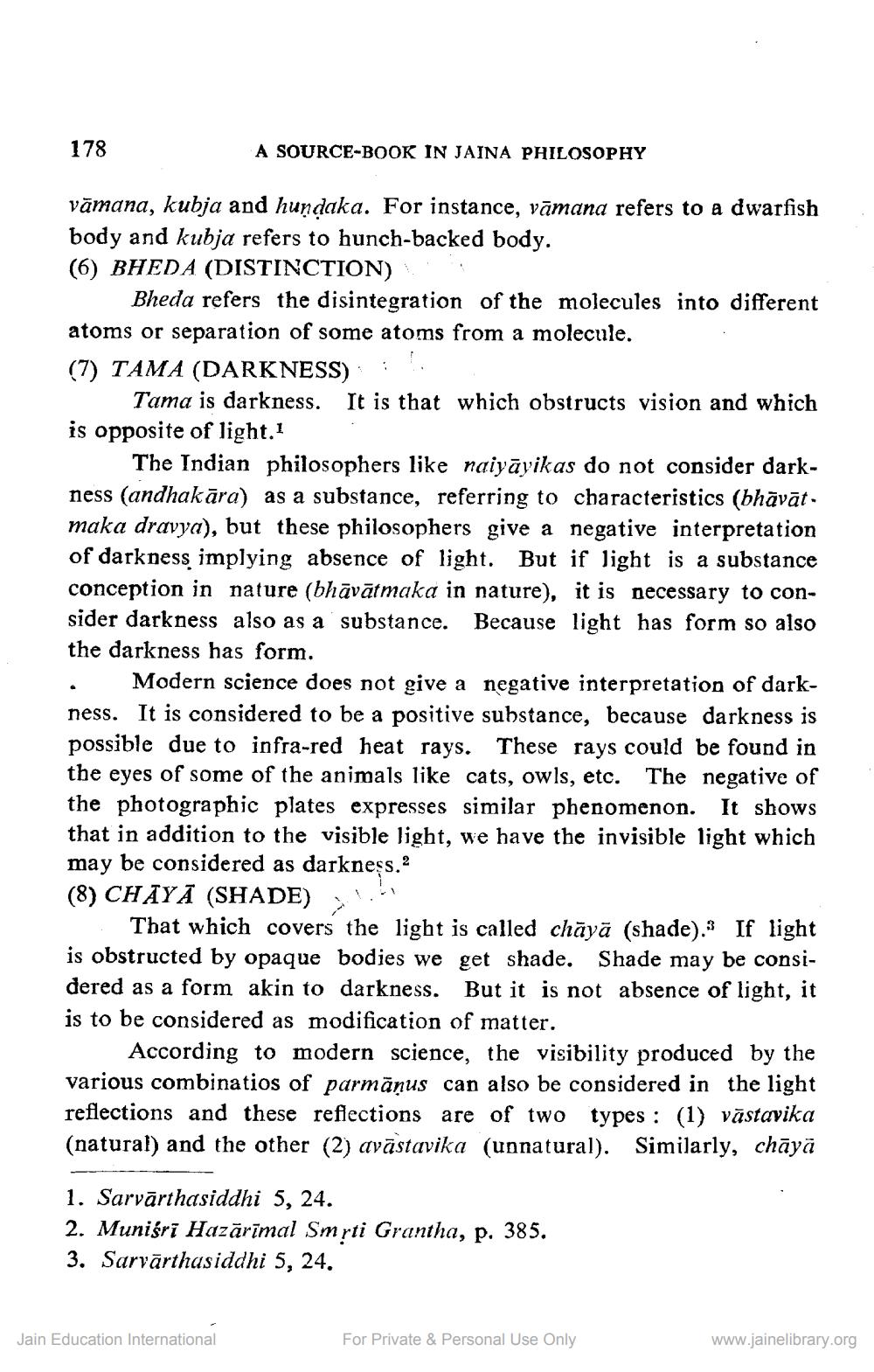________________
178
A SOURCE-BOOK IN JAINA PHILOSOPHY
vāmana, kubja and hundaka. For instance, vāmana refers to a dwarfish body and kubja refers to hunch-backed body. (6) BHEDA (DISTINCTION)
Bheda refers the disintegration of the molecules into different atoms or separation of some atoms from a molecule. (7) TAMA (DARKNESS):
Tama is darkness. It is that which obstructs vision and which is opposite of light.1
The Indian philosophers like naiyāyikas do not consider darkness (andhakāra) as a substance, referring to characteristics (bhāvāt. maka dravya), but these philosophers give a negative interpretation of darkness implying absence of light. But if light is a substance conception in nature (bhāvātmaka in nature), it is necessary to consider darkness also as a substance. Because light has form so also the darkness has form. . Modern science does not give a negative interpretation of darkness. It is considered to be a positive substance, because darkness is possible due to infra-red heat rays. These rays could be found in the eyes of some of the animals like cats, owls, etc. The negative of the photographic plates expresses similar phenomenon. It shows that in addition to the visible light, we have the invisible light which may be considered as darkness.2 (8) CHĀYĀ (SHADE);
That which covers the light is called chāyā (shade). If light is obstructed by opaque bodies we get shade. Shade may be considered as a form akin to darkness. But it is not absence of light, it is to be considered as modification of matter.
According to modern science, the visibility produced by the various combinatios of parmāņus can also be considered in the light reflections and these reflections are of two types : (1) vāstavika (natural) and the other (2) avāstavika (unnatural). Similarly, chāyā
1. Sarvārthasiddhi 5, 24. 2. Muniśrī Hazārīmal Smrti Grantha, p. 385. 3. Sarvārthasiddhi 5, 24.
Jain Education International
For Private & Personal Use Only
www.jainelibrary.org




